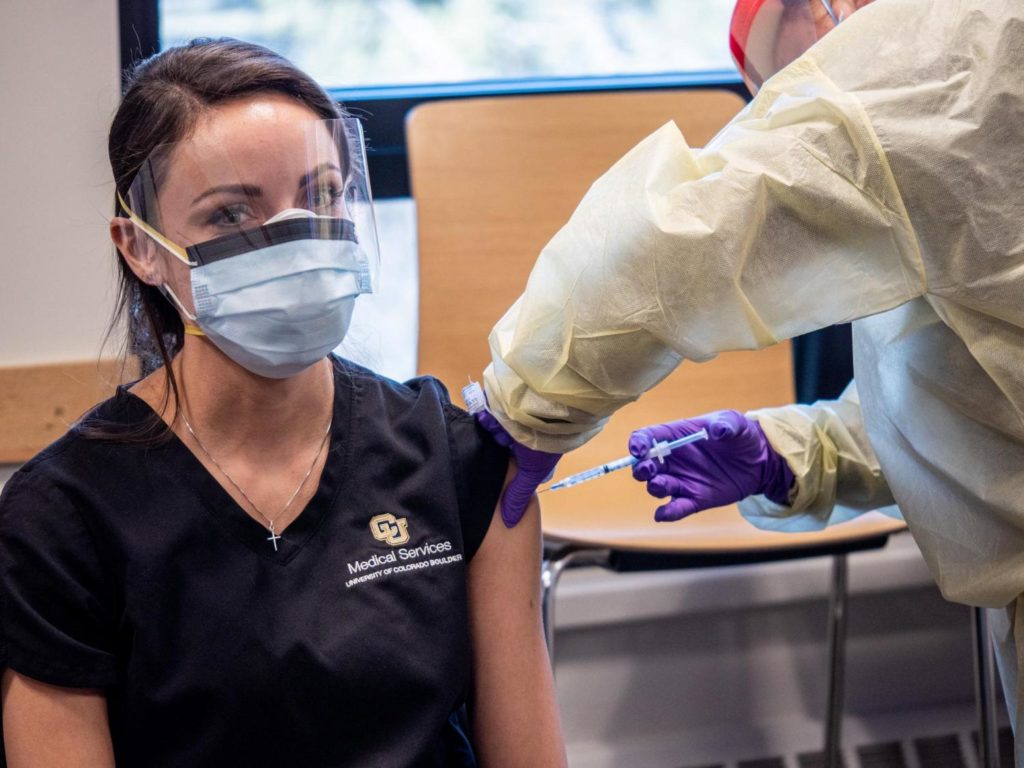The end of the COVID-19 pandemic

The J&J vaccine is going to allow a huge number of people to be vaccinated more quickly than the Pfizer and Moderna versions:
Doctors say it looks like mask-wearing will last longer than originally anticipated even as a new vaccine is expected on the market by next month.
Wearing masks will likely be part of our new normal until at least 2022, even as more Americans get vaccinated across the United States, Dr. Anthony Fauci said this week.Doctors say the extra protection will be necessary.
Fauci, director of the National Institute of Allergy and Infectious Diseases and chief medical adviser for the White House’s COVID-19 response, said even though long-term mask-wearing is a possibility, he expects the U.S. to regain “a significant degree of normality” as we enter the fall and winter.
This comes as the Food and Drug Administration found Johnson and Johnson’s COVID-19 vaccine to be safe and effective and will come to a vote for emergency use approval.
The FDA confirmed that overall, the vaccine is about 66% effective at preventing moderate to severe COVID-19 and about 85% effective against the most serious illness.
Fauci advises Americans to continue to wear face coverings and follow other measures aimed at stemming the spread of the coronavirus, such as handwashing and social distancing, especially since some experts worry that we could see another spike in new cases as new virus variants spread across the country.
There are some differences with Johnson and Johnson’s vaccine compared with the two others that are on the market in the United States.
You only need one dose of Johnson and Johnson’s vaccine compared with the Pfizer and Moderna vaccines, which require two shots for them to be fully effective.
“J&J vaccine, yes it’s going to be single-dose, a single dose is on target. We’re going to get 100 million doses, in addition, and over and above that, J&J is doing a trial with two doses to see if you can get higher efficacy,” Fauci said. “Whether they do or not is not going to affect the 100 million doses of what we are going to get.”
With the two-shot vaccines, people are expected to get some level of protection within a couple of weeks after the first shot. But full protection may not happen until a couple of weeks after the second shot.
Pfizer’s second dose comes three weeks after the first, and Moderna’s comes after four weeks. And the effect of vaccinations generally aren’t immediate, thus the importance of continued mask-wearing.
Another difference among the vaccines is that the Pfizer and Moderna vaccines must be kept frozen, while the J&J shot can last three months in a refrigerator, making it easier to handle.
Johnson and Johnson has said it will be able to provide 20 million doses by the end of March and an additional 100 million doses over the summer.
A couple of predictions:
(1) Mask-wearing in public is going to remain at least somewhat commonplace in at least parts of the United States for a long time, and it will become yet another semi-permanent culture war marker. There are all sorts of good reasons to wear masks in crowded public spaces, especially indoors, as I’m told is common in many East Asian societies. I remember walking through the Detroit airport a few years go — a Northwest hub that features a lot of flights to and from East Asia — and being struck by the number of people who were wearing masks.
(2) The COVID-19 pandemic will be “over” this fall, in the sense that the major disruptions in social life will be largely if not completely gone. Bars, restaurants, football stadia, etc. will all be full again, school will be in person and so on. (I’m speaking here strictly about the American context).
Of course the pandemic will have all sorts of long-term effects: there will be a lot more telecommuting, distance learning, and the like, but things will still be mostly back to semi-normal.
This does not, unfortunately, mean that we won’t see a lot of COVID deaths after this winter and spring. What I wouldn’t be surprised to see happen is that something like 50,000 COVID deaths per year going forward becomes a kind of normal baseline expectation, at least for a few years, until hopefully the disease disappears more or less completely. This is another way of saying that I don’t believe even the most moderate quarantine measures will be socially sustainable once the current wave of the disease has passed. It’s also a way of saying that this society is probably too screwed up to achieve genuine herd immunity any time soon.
This isn’t a normative judgment about the extent to which such measures ought to be sustained until the disease is largely eradicated. Rather, it’s a prediction of what sorts of risks people will be willing to run for themselves and others, in a society in which vaccines will have drastically reduced but not yet come close to having completely eliminated the mortality and morbidity risks created by COVID-19.


